 |
|||||||||||||||
Note that this page, as well as the others that have "Extra" in their titles, are here to present images that would not fit on other pages because of limitations on page size. |
||
— The B-52 Motherships — |
||
 |
||||
The two B-52 motherships, both seen on display during 1959 at Edwards AFB.
NB-52A 52-0003 is at left.
NB-52B 52-0008 is seen below, next to a B-58. Efwards History Office |
||||
 |
||
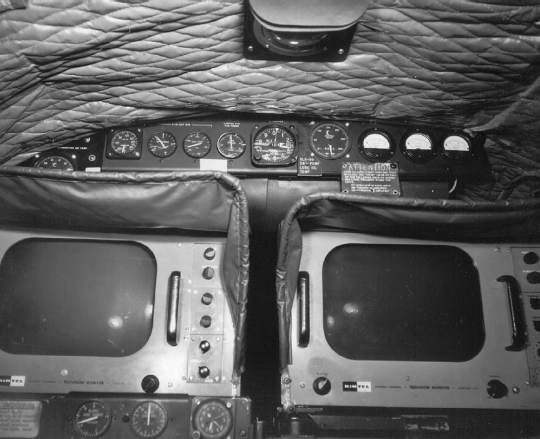 |
||||
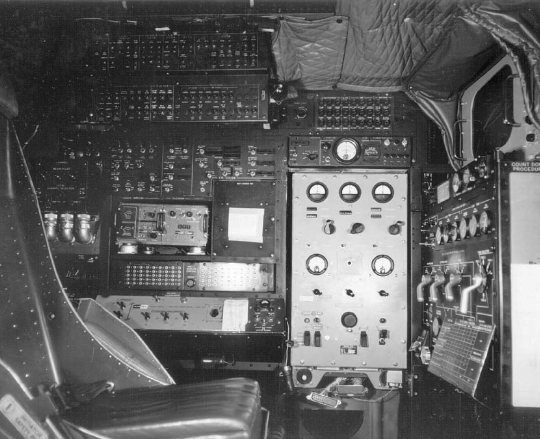 |
||||
(above and below) The Launch Panel Operator's station on B-52 no. 008 on 10 May 1961. Besides the television monitors, which gave fore and aft views, there was a bubble window to the LPO's right where he could directly view the X-15 on the B-52's right wing Armstrong Flight Research Cneter |
||
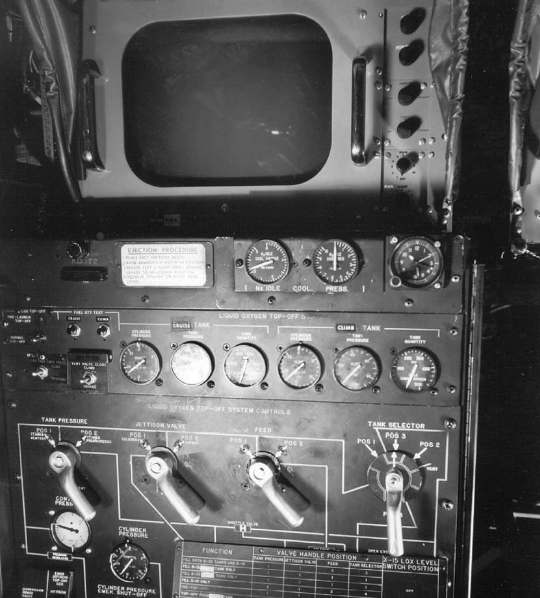 |
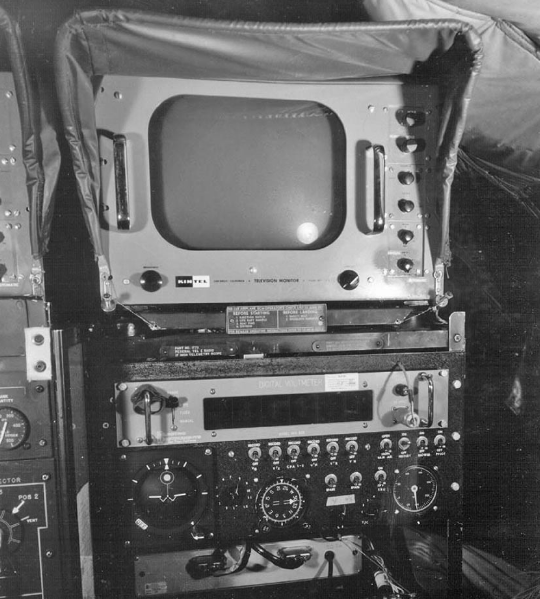 |
|||
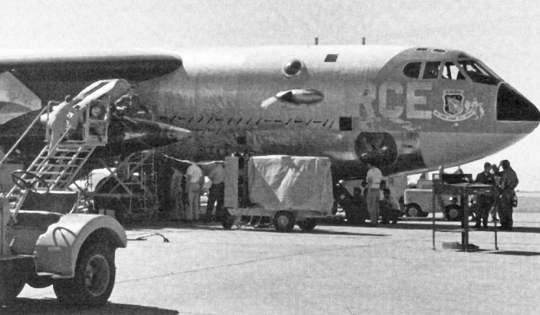 |
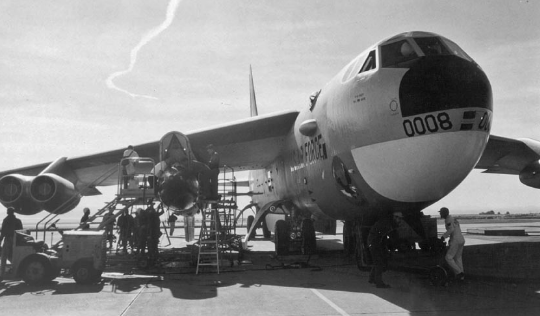 |
|||
X-15 no. 2 being prepared for flight on 12 Sep. 1962. Edwards History Office |
B-52 mothership no. 008 after a fresh coat of paint. Edwards History Office |
|||
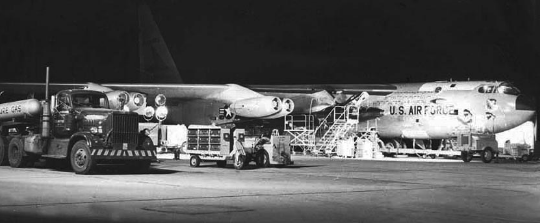 |
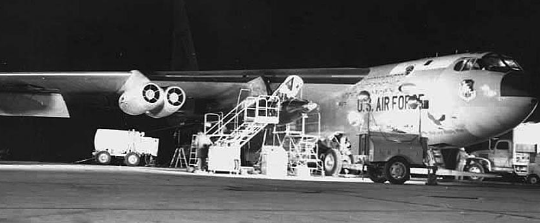 |
|||
Nightime work under glaring lights on the X-15 being mated to the B-52 and readied for a mission. Edwards History Office |
||
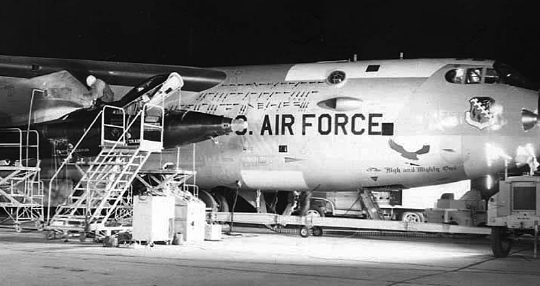 |
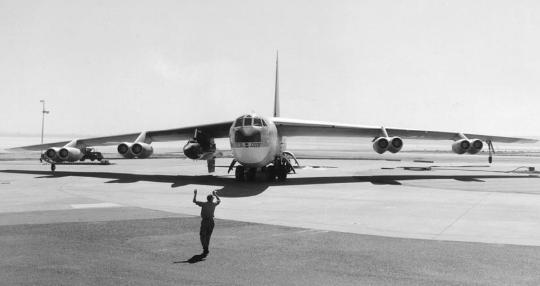 |
|||
B-52 no. 003 under the lights. Note the X-15 mission markings along the fuselage. Edwards History Office |
B-52 no. 008 directed for taxi at the start of X-15 mission 2-24-44 with Jack McKay. Edwards History Office |
|||
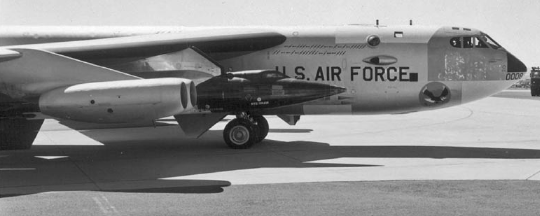 |
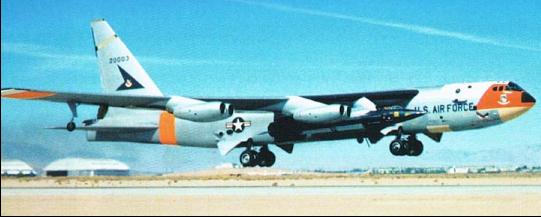 |
|||
B-52 no. 008 continues taxiing on 29 Jun. 1962. Edwards History Office |
B-52 no. 003 takes off with Robert Rushworth in the X-15 on 4 Oct. 1961. Edwards History Office |
|||
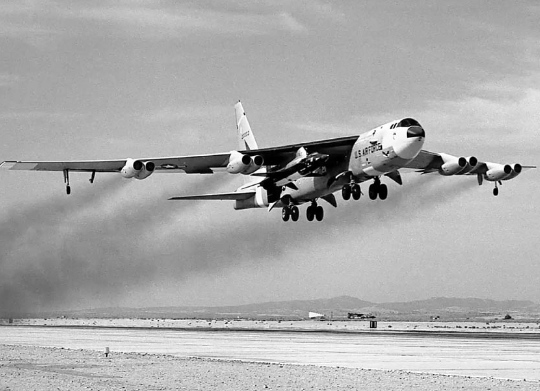 |
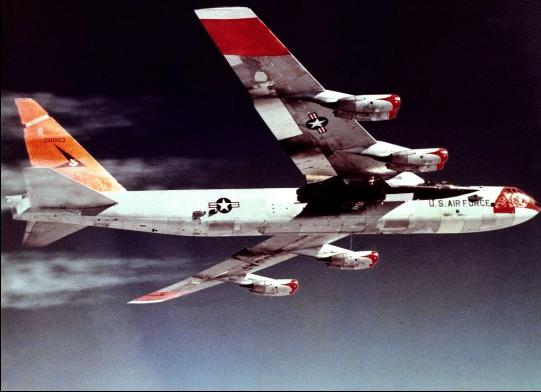 |
|||
B-52 no. 003 lifts off the tarmac and starts to retract its landing gear. Edwards History Office |
B-52 no. 003 carries the X-15 on an early flight in the program using the LR-11 rockets. Edwards History Office |
|||
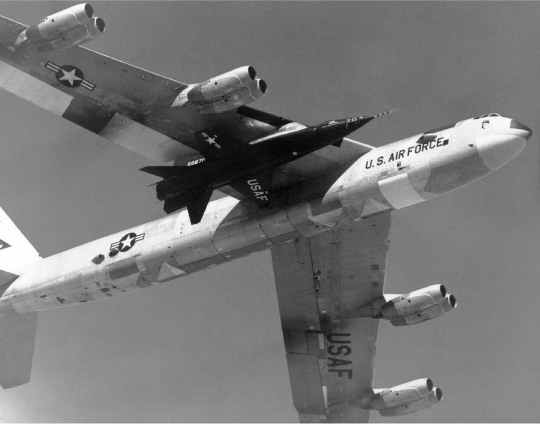 |
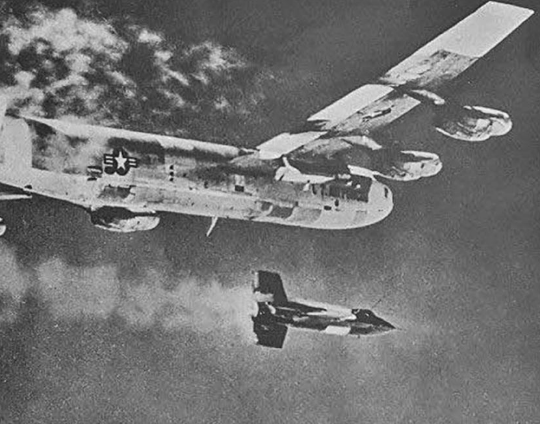 |
|||
X-15 no. 1 being carried aloft by B-52 no. 003 on 12 Aug. 1960. Lewis Research Center |
Bob White launches on mission 1-10-19 on 12 August. Maximum altitude with LR-11s. author's collection |
|||
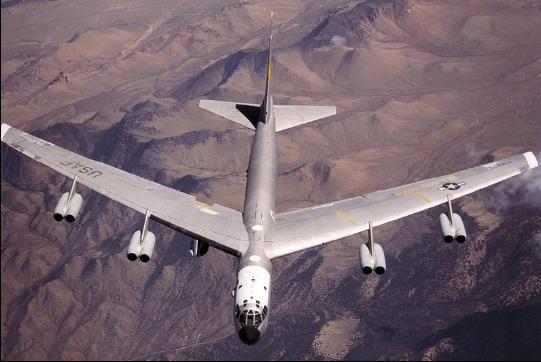 |
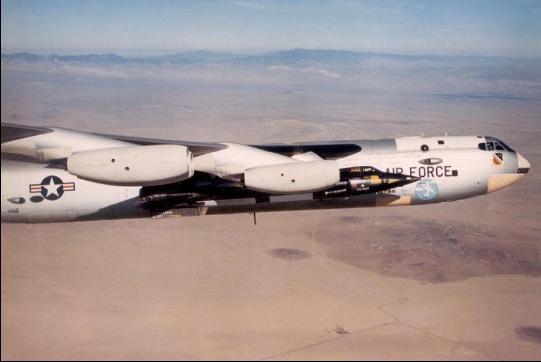 |
|||
The mothership flies alone. No X-15 is carried on the right wing's pylon. Edwards History Office |
Pete Knight is nestled into X-15 no. 3 on 12 Oct. 1965 with mothership no. 008. Edwards History Office |
|||
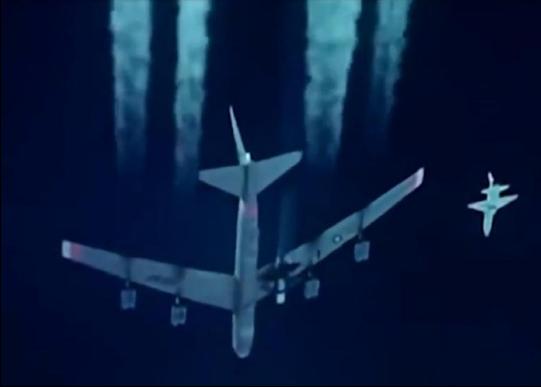 |
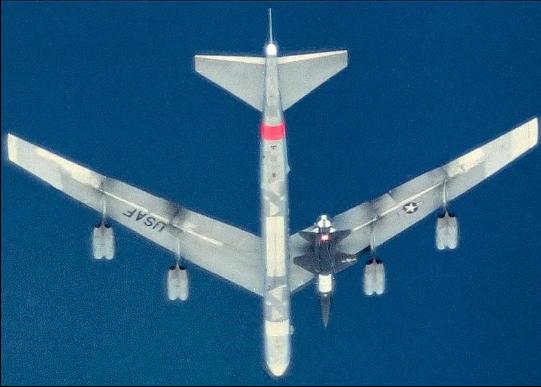 |
|||
The B-52 leaves a stark contrail, as a T-38 chase plane is close by watching the X-15. author's collection |
Jack McKay is carried to launch altitude by B-52 no. 008 on 1 Feb. 1961. Edwards History Office |
|||
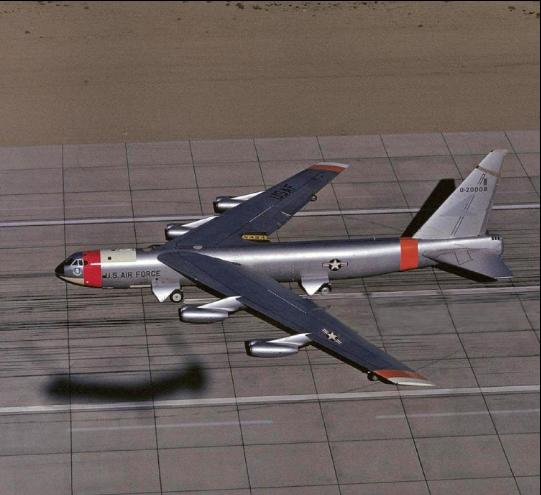 |
||||
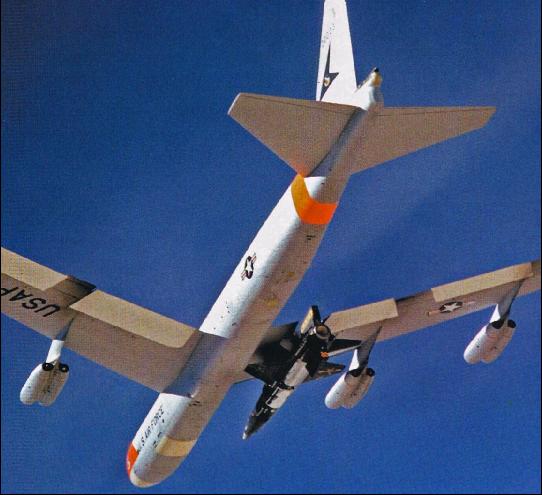 |
||||
On 3 Nov. 1961 Robert White was carried aloft in X-15 no. 1, but the launch was aborted and the B-52 mothership no. 003 carried him safely back to Edwards. Edwards History Office |
B-52 no. 008 starting its take-off roll from the Edwards runway with an X-15 under the right wing. It almost appears that the shadow of the H-21 belongs to the B-52. Edwards History Office |
|||
— X-15 Landings — |
||
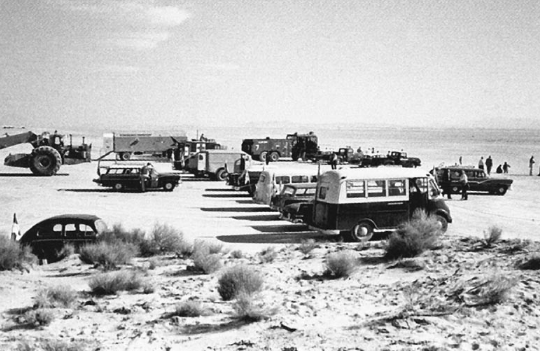 |
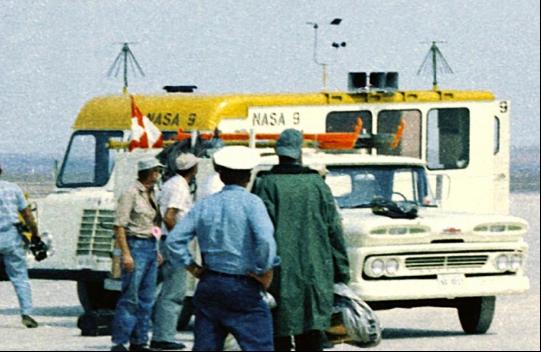 |
|||
An army of vehicles await Scott Crossfield on his first flight on 8 Jun. 1959. North American Aviation |
The NASA 9 field control van is part of the landing vehicle convoy. Edwards History Office |
|||
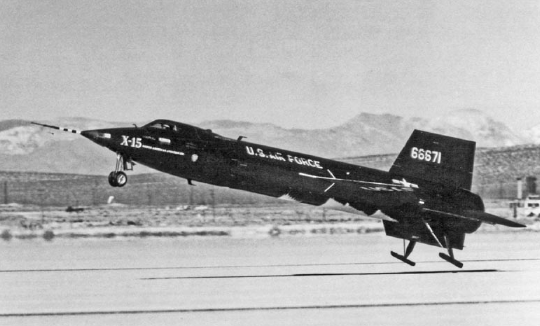 |
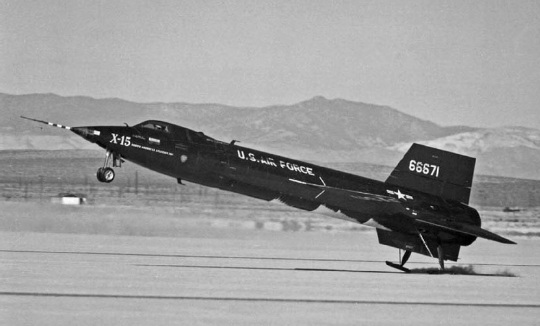 |
|||
Crossfield touches down in X-15 no. 2 at the end of the first powered X-15 flight on 17 Sep. 1959. The LR-11 rocket engines would eventual push the X-15 to Mach 3.5, before being permanently supplanted by the much more powerful XLR-99-RM-1, which would take Pete Knight and this same X-15 to Mach 6.70 (4,520 mph) on 3 Oct. 1967 North American Aviation |
||
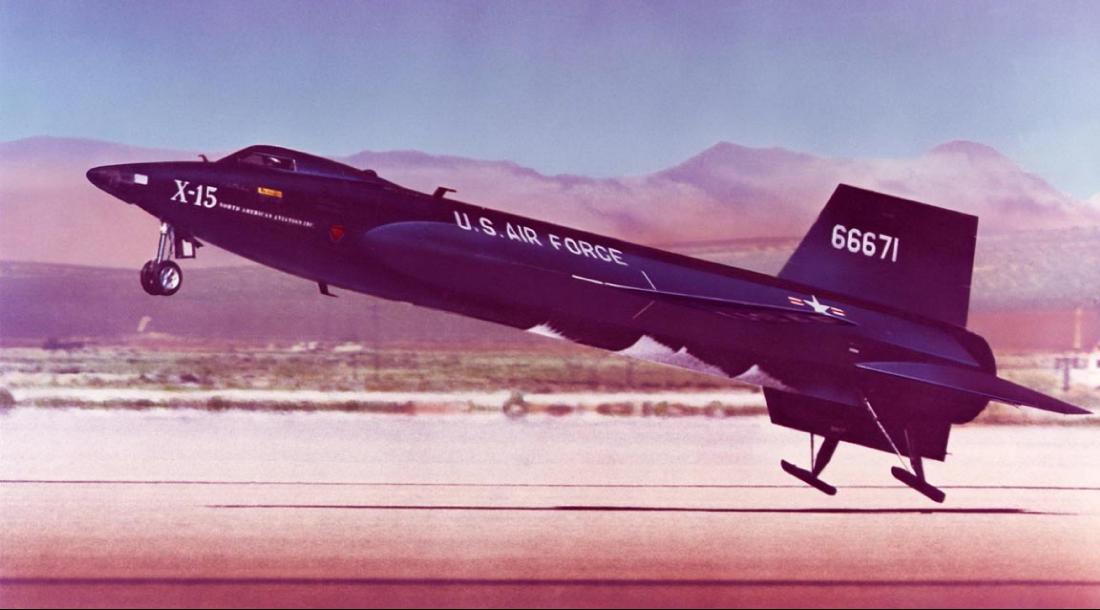 |
||
An interesting, if bizzare, artist's rework of the image of Crossfield's landing from above left. Note the colorization, but also the softening of the overall image, plus the removal of the nose spike, and its replacement by the Q-Ball nose in order to show a more advanced version of the rocket plane. author's collection |
||
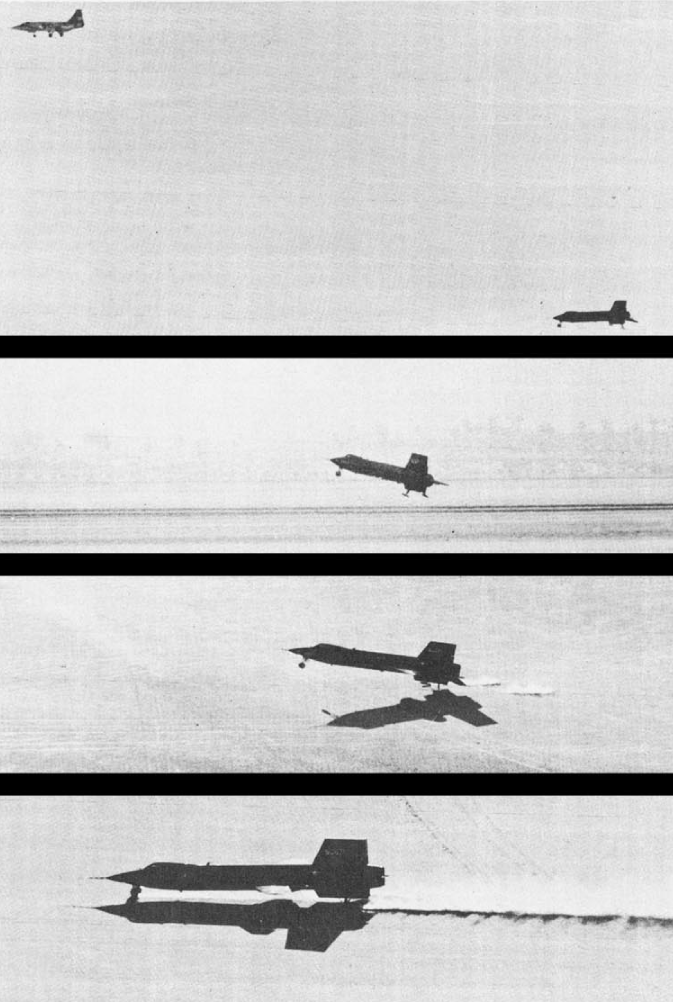 |
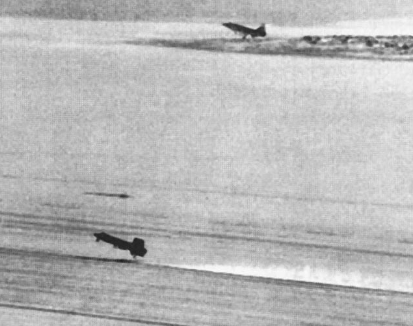 |
|||
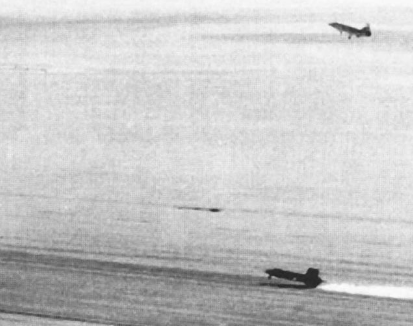 |
||||
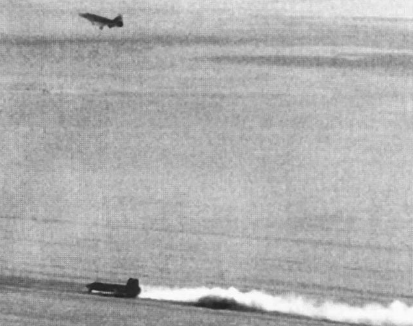 |
||||
(above left and right) Two different landing sequences from early X-15 flights. In the left-hand sequence, the top two images are taken from ground level, while the bottom are taken from the H-21 helicopter. In the right-hand sequence, all three images are from the H-21. An F-104 landing chase plane can be seen in several of the photos. author's collection |
||
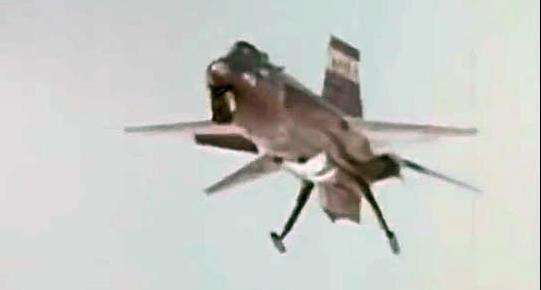 |
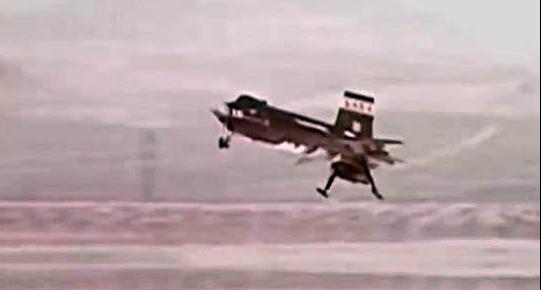 |
|||
The six images (2 above and 4 below) are from NASA film coverage of an X-15 landing. NASA Headquarters |
||
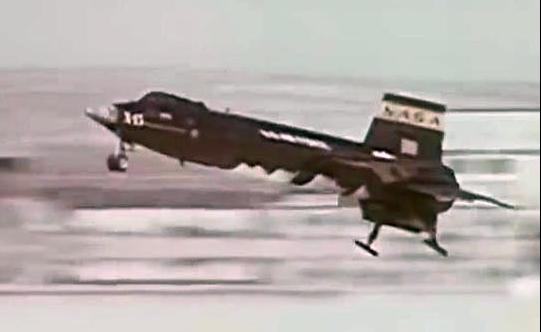 |
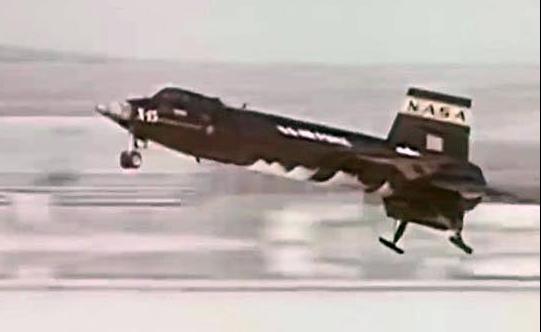 |
|||
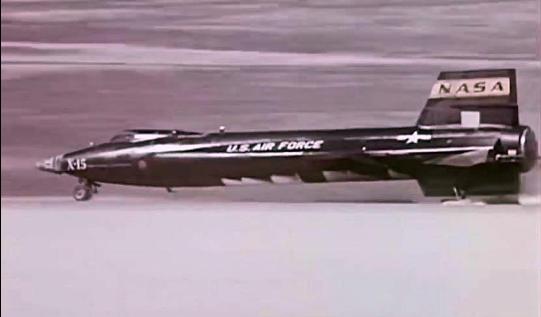 |
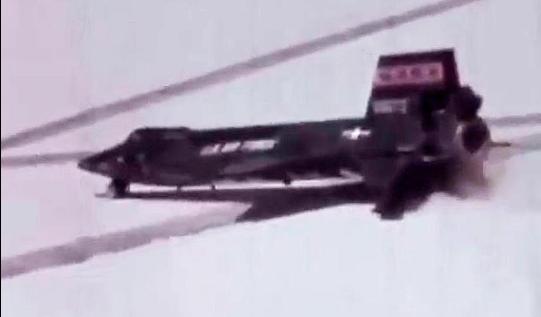 |
|||
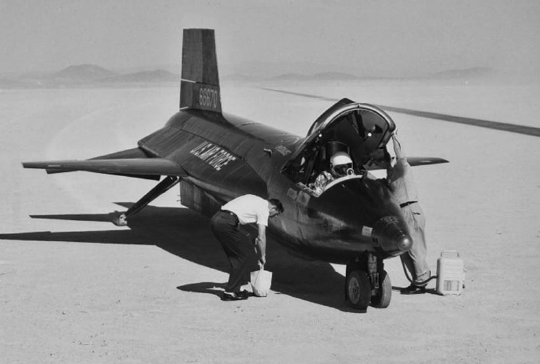 |
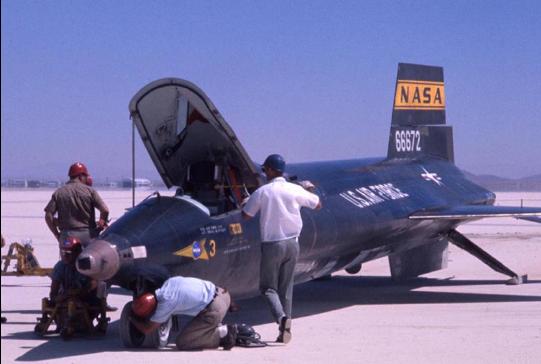 |
|||
Two men arrive soon after landing to pop the canopy and help the pilot from the cockpit of X-15 no. 1. Note the lack of vehicles and people compared to earlier in the program. Edwards History Office |
X-15 no. 3 undergoes postflight examination and preparation to return to the NASA hangar. The pilot has already left the aircraft and is headed for his debriefing. Armstrong Flight Research Center |
|||
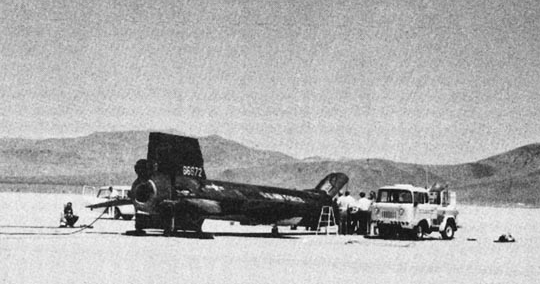 |
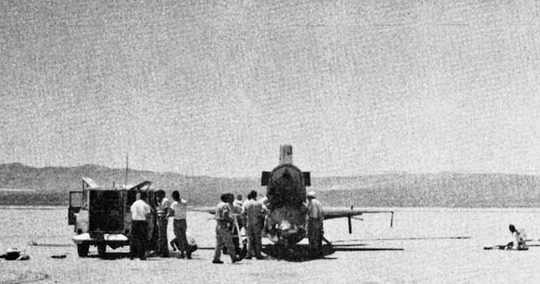 |
|||
Milt Thompson flew mission 3-29-49 on 21 May 1964 in X-15 no. 3. The engine quit after just 41 seconds and Milt had to make an emergency landing at Cuddeback Dry Lake. author's collection |
||
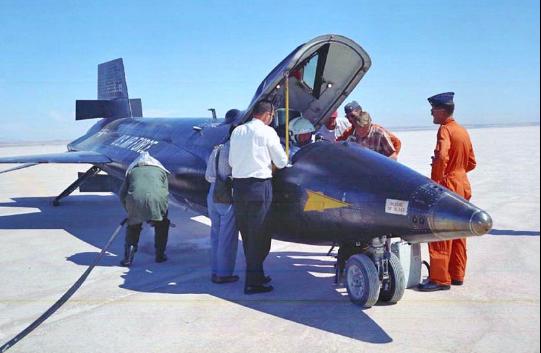 |
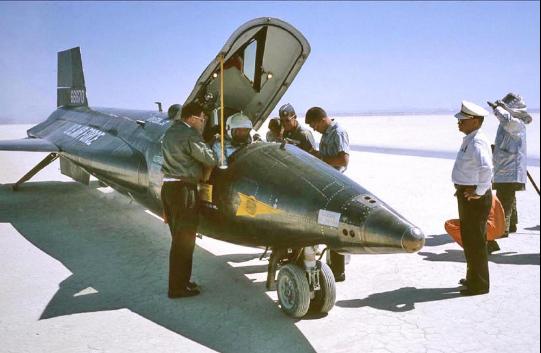 |
|||
Landing of two different missions in X-15 no. 1. Note the fire chief standing near the nose in the right-hand image. He was present at every X-15 landing throughout the program. Armstrong Flight Research Center |
||
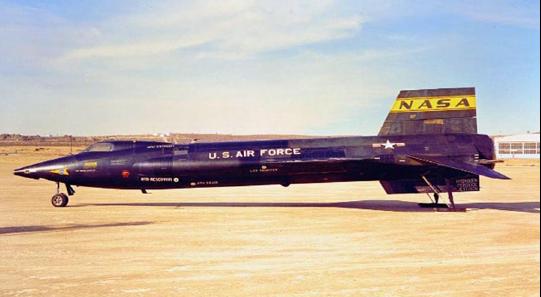 |
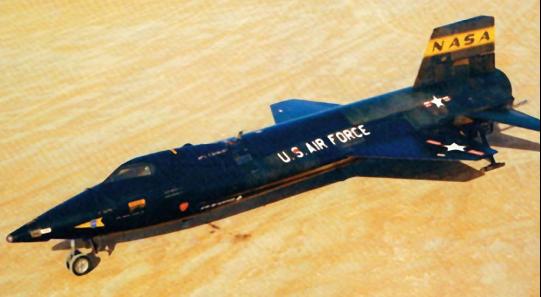 |
|||
X-15 no. 3 on 17 Jan. 1962, after mission 3-2-3. These images were shot immediately after Neil Armstrong took this aircraft to 133,500 feet at Mach 5.51, or 3,765 mph. Armstrong Flight Research Center |
||
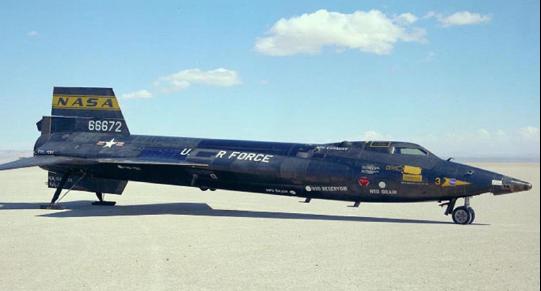 |
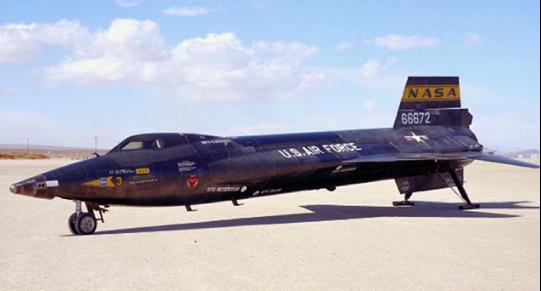 |
|||
Joe Walker had just taken this aircraft to a height of 347,800 feet on mission 3-21-32 on 19 Jul. 1963. Just over one month later, on 22 August, he would top out the X-15 program at 354,200 feet, or 67.1 miles in altitude in this same aircraft. Armstrong Flight Research Center |
||
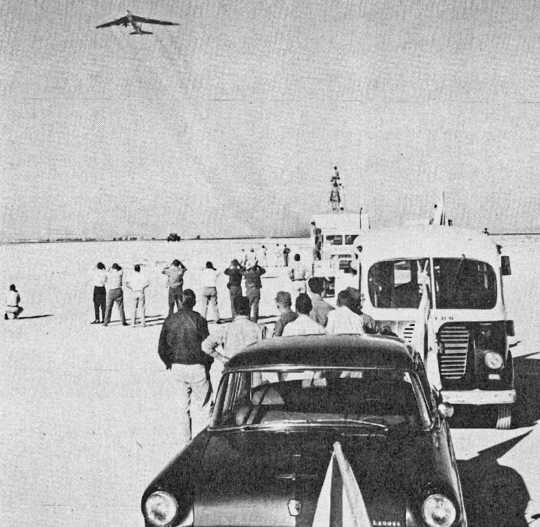 |
||||||
From Launch to Landing
(left) B-52 no. 003 takes off from Rogers Dry Lake with a tiny X-15 no. 1 barely visible under the mothership's wing. This is the beginning of mission 1-1-5 on 8 Jun. 1959, with all the support vehicles and personnel waiting on the lakebed for Scott Crossfield to safely return. This was the first of 199 missions of the X-15 program. North American Aviation |
||||||
(below) Soon after landing, everyone surrounds the X-15. The H-21 helicopter has already landed, as seen behind the X-15. The B-52 mothership, with its landing gear down, makes a pass in salute of the pilot and his rocket plane. North American Aviation |
||||||
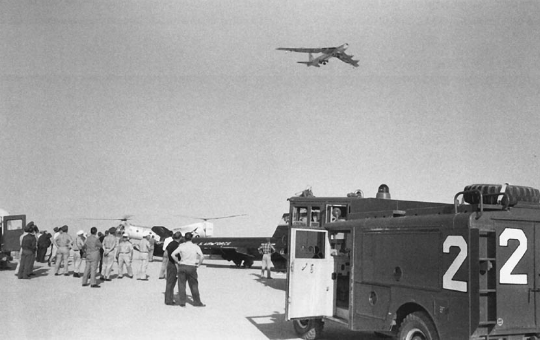 |
||||||
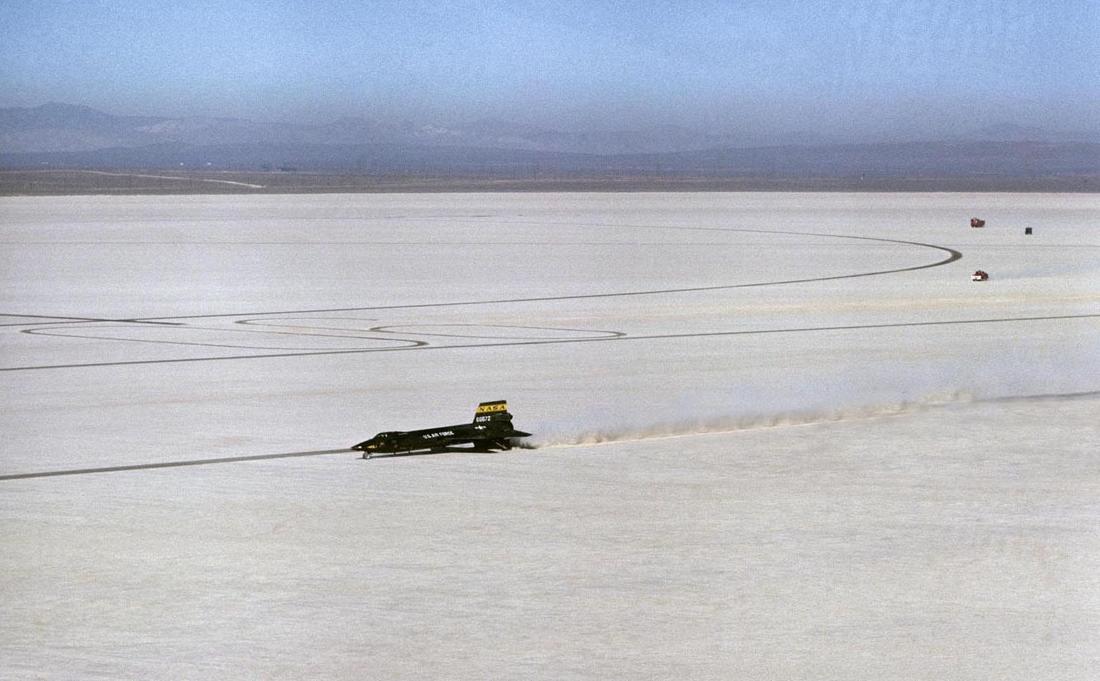 |
||
X-15 no. 3 touches down on Rogers Dry Lake at Edwards AFB in California's Mojave Desert. This image helps convey the vast emptiness of the lakbeds used for research flights. Armstrong Flight Research Center |
||